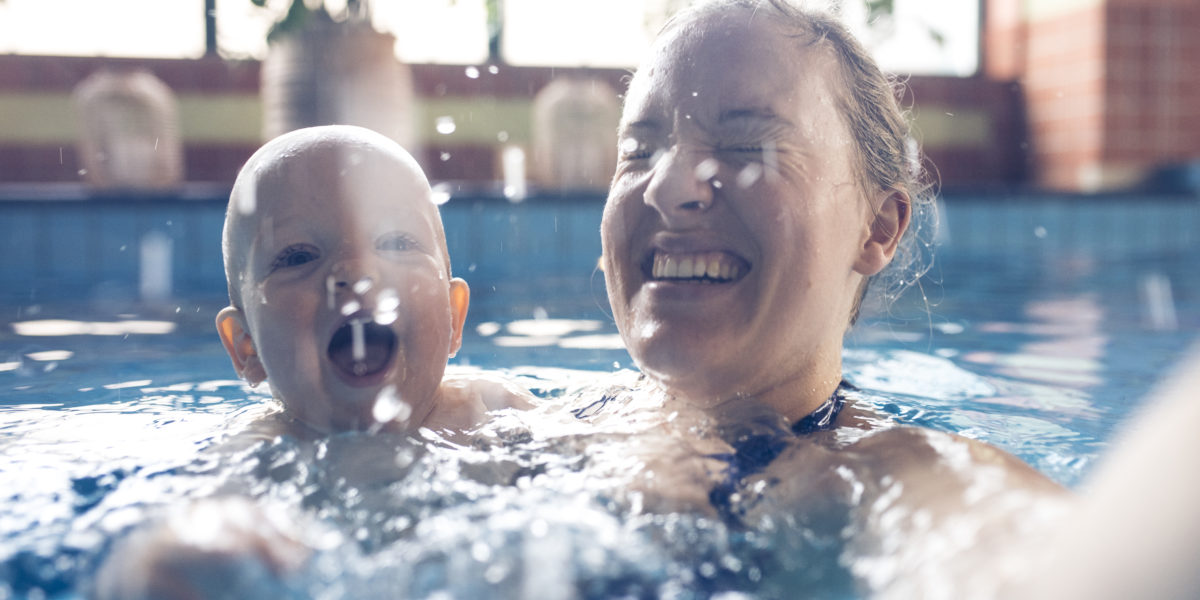Children are naturally curious, so it’s especially important to be careful with children around any body of water. According to the Centers for Disease Control, drowning is one of the top 10 causes of death for children in every region of the world. Most drownings in children under the age of 4 years happen in home swimming pools, whether at their own home or that of a friend, relative or neighbor. These guidelines can help protect children at the pool or near a lake or at the beach.
Keep kids at arm’s length.
Wherever there is standing water, even a child-sized pool, kids under 5 years old should be within arm’s length of an adult who is supervising them. Children can drown in as little as two inches of water.
Designate a water-watcher.
Around any water, parents should know who’s watching the kids and never assume that a child is being watched. Always designate one adult who knows how to swim and is completely in charge of watching the children. This adult should avoid distracting activities like playing cards, reading books, talking on the phone, and using alcohol or drugs. Never rely solely on a lifeguard. Remember that drowning happens quickly and quietly.
If you own a pool, enclose your pool.
Don’t depend on a pool or door alarm. Secure a home pool within a fence that surrounds all four corners of the pool. The fence should not have openings or protrusions that a young child could use to get over, under or through. Fences are the most effective, proven way to prevent drowning of young children and should be 4 feet high, have 4 sides, have slats no more than 4 inches wide and have a self-closing, self-latching gate that only opens out, away from the pool area and has a latch at least 54 inches from the ground (out of reach of a child).
Remember that swimmers are at risk too.
Swim lessons can reduce but not prevent the risk of pool-related injuries among children. Just because a child knows how to swim does not mean that they’re not at risk for drowning. Children in the pool always should be closely supervised by an adult.
For non-swimmers and beginning swimmers, use U.S. Coast Guard-approved flotation devices and life vests. Avoid floaties or puddle jumpers — they are not a substitute for approved life jackets or proper supervision and can give children and parents a false sense of security.
Learn child and infant CPR.
Everyone at a pool should be ready to do what they can to rescue a child who is not breathing. Even young teenagers can learn CPR, and children can learn how to seek help when someone is in trouble. The American Association of Pediatrics recommends swim lessons as a layer of protection against drowning that can begin for many children starting at age 1. There is no evidence that swimming lessons or water survival skills courses can prevent drowning in babies younger than 1 year of age.
Always check the water first.
If a child is missing, look for him or her in the pool, water or spa first. This is especially important if the child is prone to wandering. Every second counts when a child is missing.
Be COVID-wise.
There is no evidence that the virus that causes COVID-19 can spread to people through the water. Avoid crowded swim areas, beaches, pools and water playgrounds where you cannot stay six feet away from people you don’t live with, whether you’re in or out of the water. Use cloth face coverings when you are not in the water and when physical distancing is hard. Remember not to place a cloth face covering on children younger than 2 years of age. Do not wear face coverings in the water as they can be difficult to breathe through when wet. Always stay home if you have symptoms of COVID-19, have been diagnosed with COVID-19, are waiting for COVID-19 test results, or were recently exposed to someone with COVID-19.
Be COVID-cautious.
Bring supplies that help you and others stay healthy — hand sanitizer (at least 60% alcohol), disinfectant wipes, tissues and paper towels. Encourage frequent hand washing, covering of coughs and sneezes and frequent disinfection of high-touch surfaces or shared objects, such as lounge chairs, tabletops, pool noodles, kickboards, door handles, etc. Discourage sharing items that are difficult to clean, disinfect or those that encounter the face (e.g., goggles, nose clips, snorkels) or sharing items with those you don’t live with. Ensure disinfectant and sanitizer products are securely stored away from children.
Talk with your child’s pediatrician or family doctor and learn more about water safety here.
Author Amanda Kay, M.D., is a pediatrician at ChristianaCare.



